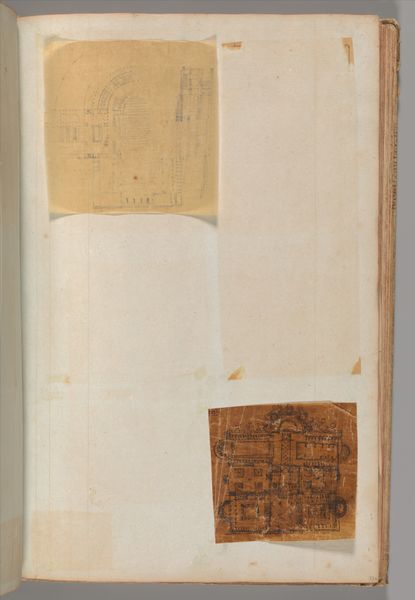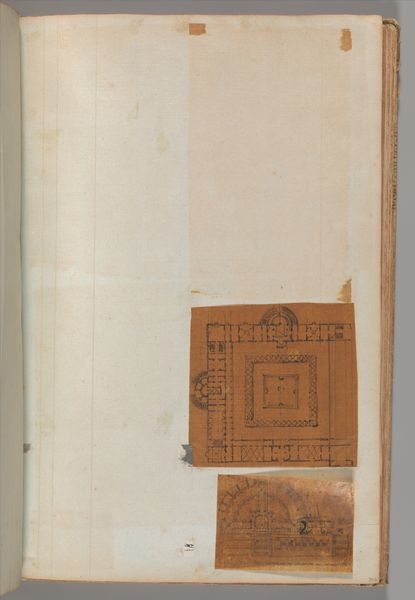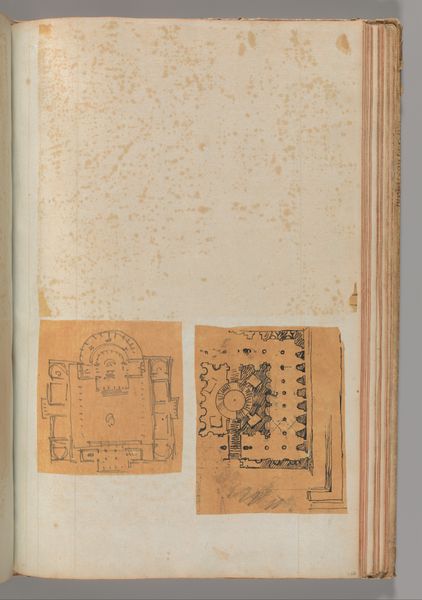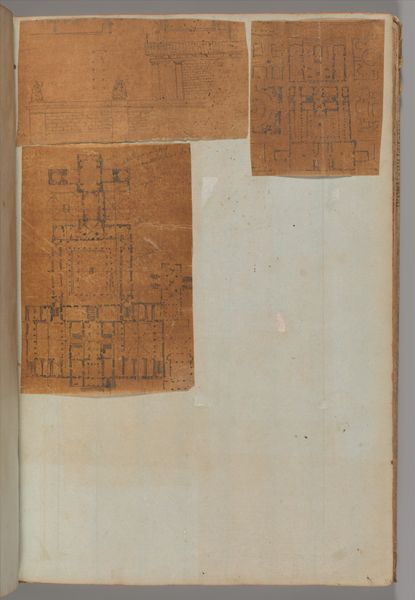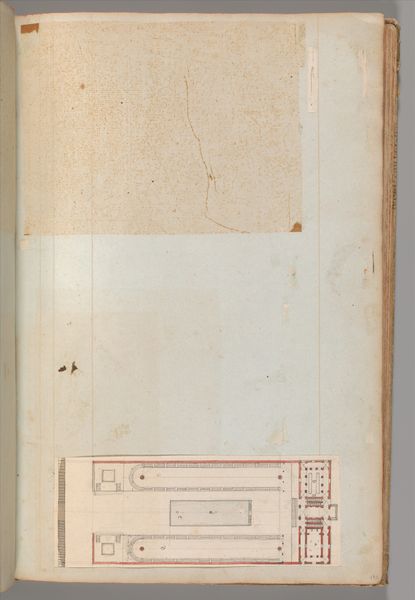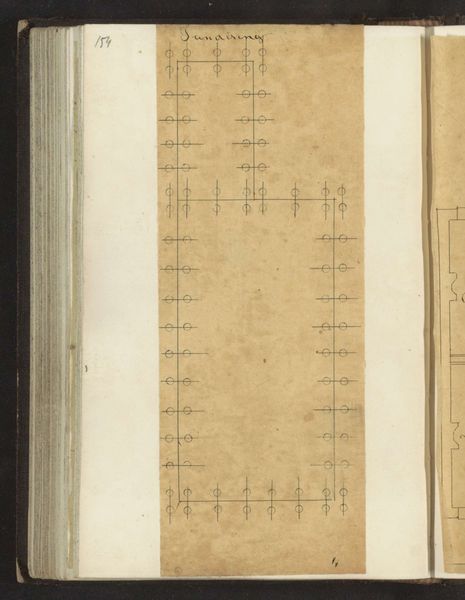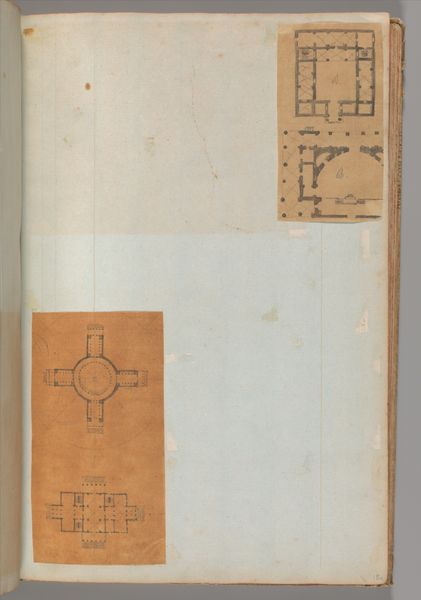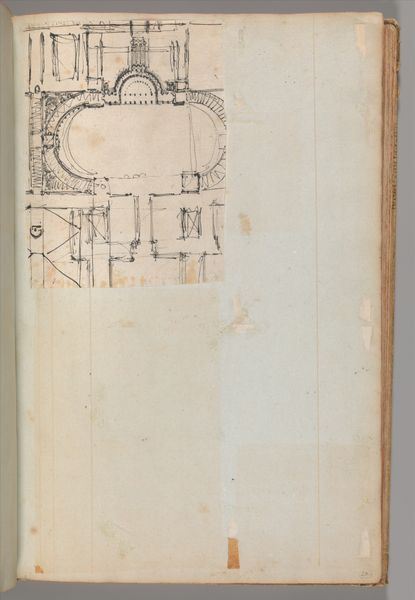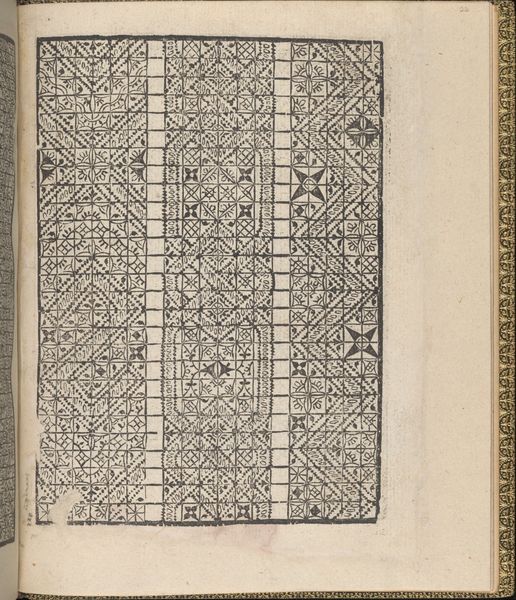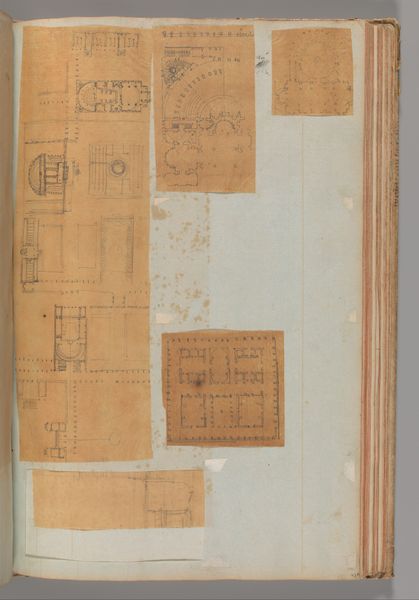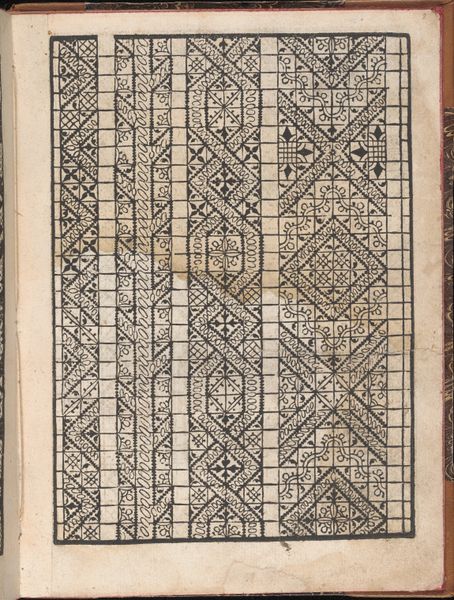
Page from a Scrapbook containing Drawings and Several Prints of Architecture, Interiors, Furniture and Other Objects 1795 - 1805
0:00
0:00
drawing, print, paper, ink, pencil, architecture
#
portrait
#
drawing
#
neoclacissism
# print
#
paper
#
ink
#
geometric
#
pencil
#
line
#
architecture
Dimensions: 15 11/16 x 10 in. (39.8 x 25.4 cm)
Copyright: Public Domain
Editor: So, this is a page from a scrapbook, dated between 1795 and 1805, by Charles Percier. It's a mix of drawings and prints, mostly of architecture, done with ink, pencil, and paper. The geometric forms feel very rigid, and I’m curious about their significance. What catches your eye here? Curator: I am struck by the stark geometry. Consider the emotional implications embedded in architectural drawings. Percier, working in the Neoclassical style, invokes the order and rationality prized during the Enlightenment. Do you see how the precise lines and repeating forms could represent a longing for stability after the chaos of the French Revolution? Editor: That's a great point. The regimented structure definitely suggests a desire for order. The scraps almost appear like artifacts. Curator: Precisely! They are cultural memories. Architecture isn’t merely functional; it’s symbolic. Think of the classical motifs, re-emerging as a visual language to legitimize power and instill a sense of national identity. Consider the use of line. What psychological impact might this rigid precision have on its intended audience? Editor: It definitely feels imposing, very different from the more ornate styles of the past. I guess I had only considered function. Curator: And consider the scrapbook format itself – a personal archive. Percier is curating and controlling historical ideas, framing a very particular narrative of his present. Does that impact your reading of the work now? Editor: Yes, the act of compiling these images adds another layer. It's like he's building his own symbolic world. Curator: Exactly! A world rooted in the perceived ideals of a classical past, intended to influence the present and future. I find the arrangement a fascinating study in how we, as humans, actively construct cultural meaning through images. Editor: I hadn't considered how deeply intertwined architecture and symbolism could be, especially concerning cultural identity. Thanks for opening my eyes to it.
Comments
No comments
Be the first to comment and join the conversation on the ultimate creative platform.
